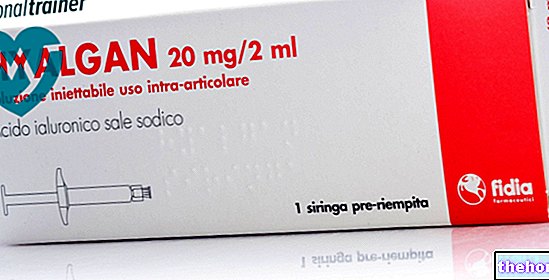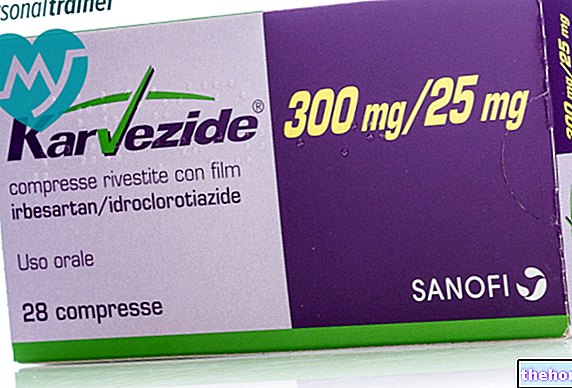Active ingredients: Clenbuterol
MONORES® 10 micrograms tablets
Monores package inserts are available for pack sizes:- MONORES® 10 micrograms tablets
- MONORES® 20 micrograms / 5 ml Syrup
- MONORES® 20 micrograms tablets
- MONORES® 5 micrograms / 5 ml Syrup
Indications Why is Monores used? What is it for?
PHARMACOTHERAPEUTIC CATEGORY
Medicines for obstructive respiratory tract syndromes. Selective beta2-adrenergic receptor agonists.
THERAPEUTIC INDICATIONS
Prophylaxis and treatment of bronchial asthma and other conditions with reversible airway obstruction, eg: chronic obstructive bronchopathy with an asthmatic component. Concomitant anti-inflammatory therapy should be considered for patients with asthma and / or chronic obstructive pulmonary disease.
Contraindications When Monores should not be used
Do not use Monores in the following cases:
- hypertrophic obstructive cardiomyopathy
- tachyarrhythmia
- hypersensitivity to Clenbuterol hydrochloride or to any of the other ingredients of this medicine.
- in cases of intolerance to sugars and in particular to galactose (component of lactose), eg. galactosemia.
Precautions for use What you need to know before taking Monores
Elderly patients and children require caution in the use of Monores
Strictly adhere to the recommended doses and duration of recommended treatment.
Excessive use or incorrect use of Monores, outside of the therapeutic indications (for example improving one's physical strength) can lead to complications, even serious and life-threatening.
However, anticholinergic bronchodilators can be administered by inhalation concomitantly with Monores.
Do not use Monores
- concomitantly with other sympathomimetic bronchodilators, unless under careful medical supervision.
- for the treatment of symptoms of acute asthma attacks, as Monores is not suitable for this type of treatment.
Patients taking Monores should be especially careful, especially in cases of taking doses higher than those recommended, if they suffer from the following conditions:
- insufficiently controlled diabetes mellitus
- coronary heart disease, arrhythmias, high blood pressure, recent myocardial infarction, severe heart failure or vascular disorders
- pheochromocytoma
- hyperthyroidism
- glaucoma
- prostatic hypertrophy.
Monores, like other beta-2-agonists, can cause cardiac ischaemia, although rarely.
Patients with pre-existing severe heart disease (e.g. ischemic heart disease, arrhythmia or severe cadiac insufficiency) should seek medical attention if they experience chest pain or other symptoms of worsening heart disease.
In case of worsening of bronchial obstruction, onset of respiratory difficulty (dyspnea), do not increase the recommended doses of Monores and contact your doctor immediately, for appropriate re-evaluation on the adequacy of therapy.
Regular increase in the use of beta agonists to control symptoms of bronchial obstruction may suggest worsening of disease control.
Monores like other beta-2-agonists can cause potentially serious hypokalaemia (decreased blood potassium levels). Particular caution is recommended:
- in severe asthma and its concomitant treatment with xanthine derivatives (theophylline), corticosteroids and diuretics as hypokalaemia may be potentiated
- in hypoxia (lack of oxygen), which can aggravate the effects of hypokalaemia on the heart rhythm.
In such situations, monitoring of blood potassium levels is recommended.
Interactions Which drugs or foods can modify the effect of Monores
It is recommended that you inform your doctor if you are taking or have recently taken any other medicines, even those without a prescription.
This is particularly important for the following Drugs which may interact with Monores:
- beta-adrenergics, non-inhalation anticholinergics, xanthine derivatives (theophylline) and corticosteroids, as they can potentiate their effect
- sympathomimetic drugs since, by synergism, undesirable effects may occur in the heart
- monoamine oxidase inhibitors or tricyclic antidepressants
- anesthetic halogenated hydrocarbons such as halothane, trichlorethylene and enflurane, as they can sensitize the myocardium to the arrhythmogenic effects of beta agonists
- beta-blockers as they antagonize the effect of Monores
Warnings It is important to know that:
Tell your doctor before starting the medicine if you have a history of heart disease, irregular heart rhythm or angina.
Pregnancy and breastfeeding
There are limited data on the use of Monores during pregnancy.
Monores inhibits uterine contractions. Do not use Monores before delivery, unless otherwise recommended by your doctor.
Do not use Monores during pregnancy and breastfeeding
For those who carry out sporting activities: the use of the drug without therapeutic necessity constitutes doping and can in any case determine positive anti-doping tests.
Driving and using machines
No studies on the ability to drive and use machines have been performed.
Side effects such as dizziness may occur during treatment with Monores. Therefore caution is recommended when driving vehicles or using machines. In case of dizziness it is recommended to avoid dangerous tasks such as driving or operating machinery.
Important information about some of the ingredients
Monores tablets contain lactose so in case of ascertained intolerance to sugars (in particular to galactose, a component of lactose), contact your doctor before taking the medicine
Dose, Method and Time of Administration How to use Monores: Posology
The individual Monores dosing regimen should be determined by the physician prior to initiating therapy. Medical supervision is recommended during treatment (e.g. through regular peak flow monitoring).
Unless otherwise prescribed, the recommended total daily dose for adults and adolescents over 12 years of age is 40 micrograms per day, divided into two doses of 20 micrograms each 12 hours apart.
During the course of therapy this dose can often be reduced to 20 micrograms per day (10 micrograms twice a day). In severe bronchospasm, treatment can be initiated with a dosage of up to 80 micrograms per day (40 micrograms twice daily).
The total daily dose in children is 1.2 micrograms / kg of body weight, ranging from 0.8 micrograms to 1.5 micrograms / kg of body weight, divided into two to three administrations.
Due to limited information in children under 6 years of age, the recommended doses for this age group should only be given under medical supervision.
Adults and adolescents over 12 years of age
Normally: 2 tablets of 10 micrograms both in the morning and in the evening (equal to 40 micrograms / day).
During treatment for prolonged periods the dose can be reduced to: 1 tablet in the morning and 1 tablet in the evening (equal to 20 micrograms / day).
In the most severe forms, in the first days of treatment, the dosage can be increased to: 4 tablets in the morning and 4 tablets in the evening (equal to 80 micrograms / day). Once the desired improvement has been achieved, follow the normally recommended doses.
Children under the age of 12
Normally: 1.2 micrograms / kg of Clenbuterol, divided into two to three daily administrations.
Unless the Doctor prescribes otherwise:
6 - 12 years: 1 tablet, two-three times a day (equal to 20 - 30 micrograms / day).
In the course of treatment for prolonged periods, the dose may be reduced.
Overdose What to do if you have taken an overdose of Monores
Symptoms:
Symptoms expected in the event of an overdose are those resulting from excessive beta-stimulation eg any of the symptoms on the side effects list: hyperglycaemia, hypertension, hypotension, increased heart rate, anginal pain and arrhythmia.
Life-threatening and fatal outcomes were particularly observed when excessive doses of clenbuterol were associated with illicit use of the drug.
Treatment:
Discontinue administration of Monores
It is recommended to contact the doctor or the nearest hospital to establish an appropriate symptomatic therapy.
In cases of severe intensive care, treatment may consist of the administration of sedatives and tranquilizers.
Non-selective beta-blockers, such as propranolol, are suitable as specific antidotes. However, an increase in bronchial obstruction should be considered and therefore the dose of the beta blocker should be carefully modulated in patients with bronchial asthma.
Overdose treatment with antidotes should be repeated at short intervals depending on symptoms.
It should be considered that the effects of Monores may be prolonged beyond those of the antidote, therefore it may be necessary to repeat the administration of the beta-blocker.
In case of accidental ingestion / intake of an excessive dose of Monores, notify your doctor immediately or go to the nearest hospital.
IF YOU HAVE ANY DOUBTS ABOUT THE USE OF MONORES, CONTACT YOUR DOCTOR OR PHARMACIST.
Side Effects What are the side effects of Monores
Like all medicines, Monores can cause side effects, although not everybody gets them.
a) General description
In analogy to other beta-adrenergics, Monores may cause the following undesirable betamimetic effects including severe hypokalaemia.
b) List of undesirable effects
Undesirable effects listed by frequency are reported, using the following convention:
Very common (≥1 / 10); common (≥1 / 100 to
COMMON side effects
HEART DISORDERS: palpitations
PSYCHIATRIC DISORDERS: restlessness
PATHOLOGIES OF THE CENTRAL NERVOUS SYSTEM: headache, tremors
GASTRO-INTESTINAL DISORDERS: nausea
Uncommon side effects
DISORDERS OF THE IMMUNE SYSTEM: Hypersensitivity
PSYCHIATRIC DISORDERS: nervousness, hyperactivity in children
PATHOLOGIES OF THE CENTRAL NERVOUS SYSTEM: dizziness
HEART DISORDERS: arrhythmia, tachycardia
THORACIC AND MEDIASTINAL RESPIRATORY DISORDERS: paradox
MUSCULOSKELETAL SYSTEM AND CONNECTIVE TISSUE PATHOLOGIES: muscle spasm, slight tremors affecting the skeletal muscles, usually more evident in the hands, myalgia.
Frequency effects NOT Known
ENDOCRINE PATHOLOGIES: hyperglycemia
DISORDERS OF METABOLISM AND NUTRITION: hypokalaemia
HEART DISORDERS: myocardial infarction, myocardial ischemia
c) Special population
An increase in blood glucose has been observed in diabetic patients.
Although it is not known how often this occurs, chest pain may occasionally occur in some people (due to heart problems such as angina). Tell your doctor immediately if you experience these symptoms while taking Monores, but do not stop taking it. "use of the medicine unless advised by your doctor.
Compliance with the instructions contained in the package leaflet reduces the occurrence of undesirable effects.
Reporting of side effects
If you get any side effects, talk to your doctor or pharmacist. This includes any possible side effects not listed in this leaflet. You can also report side effects directly via the national reporting system? At https://www.aifa.gov.it/content/segnalazioni-reazioni-avverse By reporting side effects you can help provide more information on safety. of this medicine.
Expiry and Retention
Expiry: see the expiry date indicated on the package
Do not use the medicine after the expiry date which is stated on the package.
The expiry date refers to the last day of that month and to the product in intact packaging, correctly stored.
Store at a temperature not exceeding 25 ° C.
KEEP THE MEDICINAL PRODUCT OUT OF THE SIGHT AND REACH OF CHILDREN
Medicines should not be disposed of via wastewater or household waste.
Ask your pharmacist how to throw away medicines you no longer use. This will help protect the environment.
Composition and pharmaceutical form
COMPOSITION
Monores 10 micrograms tablets
One tablet contains as active ingredient:
Clenbuterol 10 micrograms
such as Clenbuterol hydrochloride 11.3 micrograms
The excipients are:
Lactose, microgranular cellulose, talc, colloidal anhydrous silica, magnesium stearate.
PHARMACEUTICAL FORM AND CONTENT
30 tablets of 10 micrograms
Source Package Leaflet: AIFA (Italian Medicines Agency). Content published in January 2016. The information present may not be up-to-date.
To have access to the most up-to-date version, it is advisable to access the AIFA (Italian Medicines Agency) website. Disclaimer and useful information.
01.0 NAME OF THE MEDICINAL PRODUCT
MONORES®
02.0 QUALITATIVE AND QUANTITATIVE COMPOSITION
MONORES 10 mcg tablets
One tablet contains Clenbuterol 10 mcg as the active ingredient, as Clenbuterol hydrochloride 11.3 mcg
MONORES 20 mcg tablets
One tablet contains Clenbuterol 20 mcg as the active ingredient, as Clenbuterol hydrochloride 22.6 mcg
MONORES 0.1 mg / 100 ml syrup
100 ml of syrup contains Clenbuterol 0.1 mg as the active ingredient, as Clenbuterol hydrochloride 0.113 mg
MONORES 0.4 mg / 100 ml syrup
100 ml of syrup contains Clenbuterol 0.4 mg as the active ingredient, as Clenbuterol hydrochloride 0.452 mg
Excipients: lactose is present in the tablets.
For the full list of excipients, see section 6.1.
03.0 PHARMACEUTICAL FORM
Tablets. The 20 mcg tablet can be divided into two halves.
Syrup.
04.0 CLINICAL INFORMATION
04.1 Therapeutic indications
Treatment of bronchial asthma; obstructive bronchopathy with asthmatic component.
Oral formulations for the treatment of bronchial asthma are indicated for those patients who are unable to use the inhaled formulations, recommended as a first line of therapy by guidelines and in medical practice..
04.2 Posology and method of administration
MONORES Tablets
Adults
Normally: 2 tablets of 10 mcg or 1 tablet of 20 mcg, both in the morning and in the evening.
During treatment for prolonged periods the dose can be reduced to: 1 tablet of 10 mcg or ½ tablet of 20 mcg, both in the morning and in the evening.
In the most severe forms, in the first days of treatment, the dosage can be increased to 4 tablets of 10 mcg or to 2 tablets of 20 mcg, both in the morning and in the evening. Once the desired improvement has been achieved, follow the normally recommended doses.
Children
Normally: 1.2 mcg / kg of Clenbuterol divided into two - three daily administrations.
Unless the Doctor prescribes otherwise:
• 6-12 years: 1 tablet of 10 mcg or ½ tablet of 20 mcg, three times a day.
• over 12 years: see adult dosage.
During treatment for prolonged periods the dose may be reduced.
MONORES 0.1 mg / 100 ml Syrup
Please Note
½ scoop of 0.1 mg / 100 ml Syrup, corresponding to 5 mL (second notch from the bottom), contains 5 mcg of Clenbuterol.
1 scoop of 0.1 mg / 100 ml Syrup, corresponding to 10 mL (third notch from the bottom), contains 10 mcg of Clenbuterol.
Children
Normally: 1.2 mcg / kg of Clenbuterol, divided into two - three daily administrations.
Unless the Doctor prescribes otherwise:
• up to 2 years: ½ scoop in the morning and ½ scoop in the evening
• 2-4 years: ½ scoop, three times a day
• 4-6 years: 1 scoop in the morning and 1 scoop in the evening
• 6-12 years: 3 half measures in the morning and 3 half measures in the evening
• over 12 years: see adult dosage.
During treatment for prolonged periods the dose may be reduced.
Adults
Normally: 2 scoops in the morning and 2 scoops in the evening.
During the treatment for prolonged periods the dose can be reduced to 1 scoop in the morning and 1 scoop in the evening.
MONORES 0.4 mg / 100 ml Syrup
Please Note
1/4 measuring spoon of 0.4 mg / 100 ml Syrup, corresponding to 2.5 ml (first notch from the bottom), contains 10 mcg of Clenbuterol.
½ scoop of 0.4 mg / 100 ml Syrup, corresponding to 5 mL (second notch from the bottom), contains 20 mcg of Clenbuterol
1 scoop of 0.4 mg / 100 ml Syrup, corresponding to 10 mL, contains 40 mcg of Clenbuterol.
Adults
Normally: ½ scoop in the morning and ½ scoop in the evening.
During the treatment for prolonged periods the dose can be reduced to: 1/4 measuring spoon in the morning and 1/4 measuring spoon in the evening.
In the most severe forms, in the first days of treatment, the dosage can be increased to: 1 scoop in the morning and 1 scoop in the evening.
Once the desired improvement has been achieved, follow the normally recommended doses.
Children
Normally: 1.2 mcg / kg of Clenbuterol, divided into two - three daily administrations.
Unless the Doctor prescribes otherwise:
• 4-6 years: 1/4 of a scoop in the morning and 1/4 of a scoop in the evening
• 6-12 years: 1/4 of a measuring spoon, three times a day
• over 12 years: see adult dosage.
During treatment for prolonged periods the dose may be reduced.
04.3 Contraindications
Hypertrophic obstructive cardiomyopathy, tachyarrhythmia, hypersensitivity to clenbuterol hydrochloride or to any of the excipients of the product.
In cases of rare conditions, which may be incompatible with an excipient of the product, it is advisable to follow section 4.4 "special warnings and precautions for use" to check if the use of the product is contraindicated
04.4 Special warnings and appropriate precautions for use
Use in elderly patients and children requires caution.
Follow the recommended doses scrupulously.
Excessive use or incorrect use of Monores, outside of the therapeutic indications (for example improving one's physical strength) can lead to complications, even serious and life-threatening.
The concomitant use of Monores with other sympathomimetic bronchodilators should be under careful medical supervision.
However, anticholinergic bronchodilators can be used concomitantly with Monores.
Monores is not suitable for treating the symptoms of acute asthma attacks.
Cardiovascular effects can be observed with the use of sympathomimetic drugs including Monores.
There is some evidence from post-marketing data and published literature of rare cases of myocardial ischaemia in association with the use of beta agonists. Patients with pre-existing severe heart disease (eg ischemic heart disease, arrhythmia or severe heart failure) taking Monores , they should be advised to seek medical attention if they experience chest pain or other symptoms of worsening heart disease.
Attention should be paid to evaluating symptoms such as dyspnoea and chest pain, as they can be of either respiratory or cardiac origin.
Monores should be used in the following conditions only after a "careful risk-benefit assessment, especially when administered at doses higher than those recommended: insufficiently controlled diabetes mellitus, coronary artery disease, arrhythmias, arterial hypertension, recent myocardial infarction, severe heart failure or vascular disorders, pheochromocytoma, hyperthyroidism, glaucoma, and prostatic hypertrophy.
In case of prolonged use, the patient should be re-checked and possibly evaluated the possibility of initiating therapy with corticosteroids (for example inhaled corticosteroids) or increasing the dosage to control airway inflammation and to prevent damage from prolonged treatment.
In case of worsening of the bronchial obstruction, the use of beta-agonists such as Monores, increasing the recommended doses, for a prolonged period of time, is inappropriate and dangerous.
Regularly increasing the use of beta agonists to control symptoms of bronchial obstruction may suggest worsening of disease control. In this circumstance, the patient's therapeutic plan and in particular the adequacy of anti-inflammatory therapy must be re-checked to prevent the potential danger to life linked to worsening control of the disease.
Potentially severe hypokalaemia can occur with beta-2 agonists. Particular caution is recommended in severe asthma as this effect may be potentiated by concomitant treatment with xanthine derivatives (theophylline), corticosteroids and diuretics.
Hypoxia can aggravate the effects of hypokalaemia on the heart rhythm. In such situations, monitoring of blood potassium levels is recommended.
Monores tablets contain lactose and therefore patients with rare hereditary problems of intolerance to sugars and in particular to galactose (component of lactose), eg. galactosemia, they should not take this medicine.
04.5 Interactions with other medicinal products and other forms of interaction
Beta-adrenergic drugs, anticholinergics, xanthine derivatives (theophylline) and corticosteroids can potentiate the effect of Monores.
Concomitant administration of other beta-mimetic drugs, systemic anticholinergics and xanthine derivatives (theophylline) may increase undesirable effects.
Concomitant treatments with other sympathomimetic drugs should be avoided since, due to synergism, undesirable effects on the heart may occur.
Beta-adrenergic agonists should be administered with caution to patients receiving monoamine oxidase inhibitors or tricyclic antidepressants as the action of beta-adrenergic agonists may be enhanced.
The inhalation of anesthetic halogenated hydrocarbons such as halothane, trichlorethylene and enflurane can sensitize the myocardium to the arrhythmogenic effects of beta agonists.
Beta-blocking drugs antagonize the effect of Monores.
04.6 Pregnancy and lactation
Although preclinical trials have not shown teratogenic effects even at the highest dosages, it is recommended to observe the normal precautions relating to the use of medicines during pregnancy, especially during the first trimester.
The inhibitory effect of Monores on uterine contractions must be particularly taken into consideration before delivery.
Preclinical studies have shown that Clenbuterol is excreted in breast milk.
Weaning of the neonate is recommended when Monores therapy is indicated.
04.7 Effects on ability to drive and use machines
No studies on the ability to drive and use machines have been performed.
04.8 Undesirable effects
In analogy to other beta-adrenergics, Monores may cause the undesirable betamimetic effects listed below
Endocrine pathologies
Hyperglycemia.
Disorders of the immune system
Hypersensitivity.
Metabolism and nutrition disorders
Hypokalemia.
Psychiatric disorders
Nervousness, restlessness and hyperactivity in children.
Central nervous system disorders
Vertigo, headache, tremors.
Cardiac pathologies
Arrhythmia, palpitations, tachycardia.
Respiratory thoracic and mediastinal disorders
Paradoxical bronchospasm.
Gastro-intestinal disorders
Nausea.
Musculoskeletal and connective tissue disorders
Muscle spasm, slight tremors affecting the skeletal muscles, usually more evident in the hands, myalgia.
04.9 Overdose
Symptoms
Symptoms expected in the event of an overdose are those resulting from excessive beta-stimulation eg any of the symptoms on the side effects list: hyperglycaemia, hypertension, hypotension, increased heart rate, anginal pain and arrhythmia.
Treatment
Treatment is to discontinue administration of Monores and initiate appropriate symptomatic therapy.
In cases of severe intensive care, administer sedatives and tranquilizers.
Non-selective beta-blockers such as propranolol are suitable as specific antidotes. However, a possible increase in bronchial obstruction should be considered and the dose of beta blockers should be carefully modulated in patients with bronchial asthma.
Overdose treatment with antidotes should be repeated at short intervals depending on symptoms.
It must be considered that the effects of Monores may be prolonged beyond those of the antidote
05.0 PHARMACOLOGICAL PROPERTIES
05.1 Pharmacodynamic properties
Pharmacotherapeutic group: drugs for obstructive respiratory tract syndromes. Selective agonists of β2-adrenergic receptors. ATC code: R03CC13
Clenbuterol, the active ingredient of Monores, is a direct stimulant of β2-type adrenergic receptors with high selectivity on the tracheobronchial muscles.
Also endowed with a secretolytic effect, it favors the fluidification of the viscous secretion and thus facilitates its expulsion through the activation of the mucociliary apparatus.
05.2 Pharmacokinetic properties
Clenbuterol is rapidly absorbed orally and causes, in a short time, an effective and protracted bronchodilation against variously induced bronchial obstruction.
Clenbuterol is almost completely absorbed by oral administration, partly metabolised and more than 85% eliminated by the kidney.
The elimination of Clenbuterol from plasma is biphasic in rats and humans and monophasic in rabbits and dogs.
In humans, the average elimination life is about 34 hours.
05.3 Preclinical safety data
Clenbuterol has a very low acute, subacute and chronic toxicity, so it is well tolerated by oral, intramuscular, intravenous and inhalation routes, even for high doses and much higher than those recommended or otherwise achievable in clinical practice.
The LD50 of Clenbuterol in rats is 215 mg / kg per os; 160 mg / kg intramuscularly and 30 mg / kg intravenously.
For inhalation administration of 1000 mcg / kg in rats and 166.6 mcg / kg in rabbits no toxic manifestations were detected.
Clenbuterol administered intramuscularly to growing albino rats at doses of 0.5 and 1 mg / kg per day and orally to adult dogs at doses of 0.25 and 0.50 mg / kg per day for 6 months is been well tolerated.
06.0 PHARMACEUTICAL INFORMATION
06.1 Excipients
The other ingredients of Monores 10 mcg tablets are:
• lactose, microgranular cellulose, talc, anhydrous colloidal silica, magnesium stearate.
The other ingredients of Monores 20 mcg tablets are:
• lactose, microgranular cellulose, talc, anhydrous colloidal silica, magnesium stearate, E 132.
The other ingredients of Monores 0.1 mg / 100 ml Syrup and Monores 0.4 mg / 100 ml Syrup are:
• methyl para-hydroxybenzoate, ethyl para-hydroxybenzoate, monobasic potassium phosphate, dibasic potassium phosphate, cherry essence, E 122, sorbitol, purified water.
06.2 Incompatibility
Not relevant.
06.3 Period of validity
Monores 0.1 mg / 100 ml Syrup and Monores 0.4 mg / 100 ml Syrup: 2 years.
Monores 10 mcg Tablets and Monores 20 mcg Tablets: 3 years.
The expiry date indicated refers to the product in intact packaging, correctly stored.
06.4 Special precautions for storage
Store at a temperature not exceeding 25 ° C.
06.5 Nature of the immediate packaging and contents of the package
Not all pack sizes may be marketed.
Monores 10 mcg Tablets and Monores 20 mcg Tablets
Blister of 30 tablets packed together with the package leaflet in a cardboard box.
Monores 0,1 mg / 100 ml Syrup and Monores 0,4 mg / 100 ml Syrup
120 mL bottle in opaque polyethylene packed with measuring cup, together with the package leaflet, in a cardboard box.
06.6 Instructions for use and handling
Unused medicine and waste derived from this medicine must be disposed of in accordance with local regulations.
07.0 MARKETING AUTHORIZATION HOLDER
Valeas s.p.a. - Chemical and Pharmaceutical Industry - Via Vallisneri, 10 - 20133 Milan
08.0 MARKETING AUTHORIZATION NUMBER
Monores 10 mcg Tablets - AIC n. 024217010 *
Monores 20 mcg Tablets - AIC n. 024217034
Monores 0,1 mg / 100 ml Syrup - AIC n. 024217111
Monores 0,4 mg / 100 ml Syrup - AIC n. 024217109 *
*Packaging not on the market
09.0 DATE OF FIRST AUTHORIZATION OR RENEWAL OF THE AUTHORIZATION
Monores 10 mcg Tablets: 01.10.1980 / May 2010
Monores 20 mcg Tablets: 08.26.1980 / May 2010
Monores 0,1 mg / 100 ml Syrup: 18.03.1999 / May 2010
Monores 0,4 mg / 100 ml Syrup: 18.03.1999 / May 2010
10.0 DATE OF REVISION OF THE TEXT
AIFA provision of 12/10/2010




























